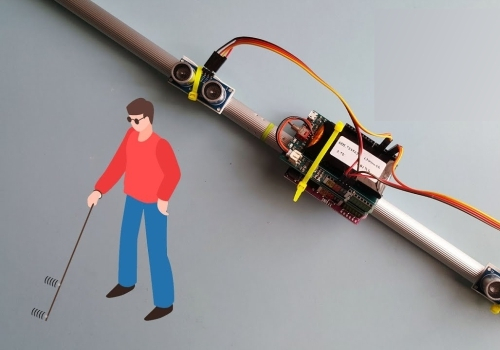Blind Stick
School Level
Packages comprises of
- Recorded Lectures
- Study Material - Pdf
- Edp
- Assessment followed by certificate after completion of 50 %
- Prototype Project view of minimum duration
- Mentorship
- Submission of Project
- Certificate after successful completion of project work
Overview
A blind stick, also known as a white cane or mobility cane, is a simple tool used by people who are blind or visually impaired to navigate their surroundings independently. The cane is usually white or reflective, and it is designed to detect obstacles on the ground and alert the user of their presence through tactile feedback. By sweeping the cane back and forth in front of them, the user can identify changes in terrain, such as steps or curbs, and avoid obstacles such as furniture or other objects. The use of a blind stick can greatly improve the safety and mobility of individuals with visual impairments, allowing them to travel with greater confidence and independence.
The blind stick is an important tool for people with visual impairments because it allows them to detect obstacles in their path and gather information about their surroundings through touch and sound. By sweeping the cane back and forth in front of them, they can feel for changes in the ground surface, such as curbs, steps, or uneven terrain. They can also use the cane to detect objects that may be at head or waist level, such as tree branches or hanging signs.
In addition to providing tactile feedback, the blind stick can also produce audible feedback. The metal or rubber tip of the cane can make a tapping sound as it hits the ground, which can help the user gauge distances and identify the location of walls or other obstacles. Some blind sticks also include a ball bearing inside the handle, which produces a clicking sound when the cane is tilted, providing additional auditory cues.
The blind stick is an essential tool for people with visual impairments, as it allows them to travel independently and safely. However, it does require practice and training to use effectively. Users must learn to sweep the cane in a smooth, controlled motion and interpret the feedback they receive through touch and sound. They must also learn to maintain a consistent stride and pay attention to their surroundings to avoid collisions.
In recent years, technology has also been developed to enhance the functionality of the blind stick. For example, some devices use ultrasonic sensors to detect obstacles and provide haptic feedback to the user. Others incorporate GPS and mapping technology to provide real-time information about the user's location and nearby points of interest. These innovations have the potential to further improve the safety and independence of people with visual impairments.
Please rotate your device
We don't support landscape mode yet. Please go back to Portrait mode for the best experience.






